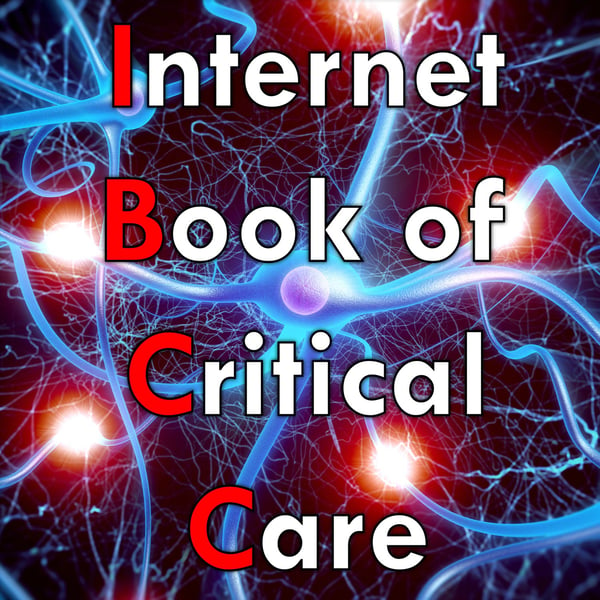IBCC Episode 14 Post Cardiac Arrest Management
The Internet Book of Critical Care Podcast
Adam Thomas
5 • 714 Ratings
🗓️ 5 December 2018
⏱️ 26 minutes
🧾️ Download transcript
Summary
These patients can truly be the sickest of the sick. Come take a listen for the summary of a chapter that is bound to be one of your go-to resources.
ROSC management
TTM
Sedation
Steroids
We've got it all.
Transcript
Click on a timestamp to play from that location
| 0:00.0 | All right, so I'm back with Madam Thomas here. |
| 0:07.7 | We're going to talk about post-cardiac arrest resuscitation. |
| 0:10.8 | And this is a cornerstone of what we do, isn't it, Josh Lear? |
| 0:13.7 | Like if you don't know how to manage these super sick patients, especially in the first five |
| 0:18.0 | minutes to the next couple days, you can really cause some harm here. Yeah, this is a staple of critical care. Fortunately, especially with the opioid |
| 0:24.5 | epidemic, but even before it, we see these patients constantly. So today, the hallmark is think brain |
| 0:29.8 | first, because everything we do in resuscitation is all about resuscitating that person, and then |
| 0:34.5 | all the other organs are important after that. So keeping that in mind, |
| 0:41.2 | we're going to talk about initial stabilization. Then we'll go over more advanced interventions and we'll round it off with an algorithm, as always, for how you are going to approach these |
| 0:46.4 | patients for two in the morning. Josh, why don't you start us off with that initial stabilization? |
| 0:50.6 | I know we always talk about ABCs, but give me the real bread and butter here. So the initial |
| 0:54.9 | stabilization starts after you get ROSC in CPR, and this merges a little bit into your CPR type |
| 1:00.2 | stuff. And we're not going to get lost in all that detail. But essentially, all of these patients |
| 1:04.0 | are going to require intubation at some point. Some of the newer literature suggesting that maybe |
| 1:08.0 | you want to get ROSC and not intubate them immediately. But eventually, once you get Ross, you're going to want to intubate them. |
| 1:13.1 | And once you do that, you want to be careful not to give them too much oxygen. |
| 1:16.0 | So hyperoxia is bad. |
| 1:17.7 | So you want to get them to saturation of 90 to 96%. |
| 1:20.8 | And a relatively normal PCO2 shooting for like maybe an entitle of 30. |
| 1:24.3 | That'll probably get you into the normal area. And then also super important, you want to support their circulation, especially if this is someone who's on the |
| 1:30.8 | unstable side. These folks are obviously the sickest patients imaginable. So they're at risk |
| 1:35.5 | for re-arresting. So you want to be pretty aggressive about supporting their circulation. |
... |
Please login to see the full transcript.
Disclaimer: The podcast and artwork embedded on this page are from Adam Thomas, and are the property of its owner and not affiliated with or endorsed by Tapesearch.
Generated transcripts are the property of Adam Thomas and are distributed freely under the Fair Use doctrine. Transcripts generated by Tapesearch are not guaranteed to be accurate.
Copyright © Tapesearch 2025.

